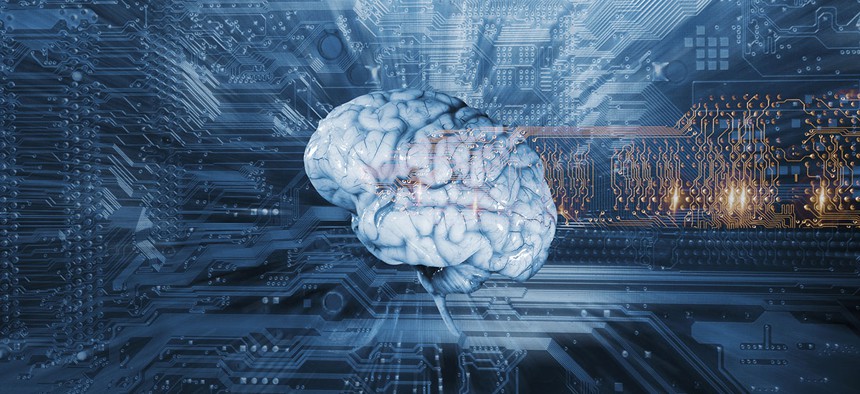White House Adviser: AI Could Make Criminal Justice System Fairer

Christian Lagerek/Shutterstock.com
But first, we need better data.
Artificial intelligence might soon become a standard part of criminal justice proceedings.
If used carefully, the technology might make fairer decisions about the length of prison sentences, determine which police officers to deploy and could also churn through body-worn camera footage, a senior White House adviser said Tuesday.
Lynn Overmann, senior adviser within the Office of Science and Technology and co-leader of the White House Police Data Initiative, described the potential role of, and challenges associated with, artificial intelligence in the criminal justice system. She spoke at the second of four workshops co-hosted by the White House about the technology’s ability to help the public and the government.
The 2.2 million people incarcerated today overrepresent minorities, those with mental health issues and those with substance abuse problems, Overmann said. Data analytics and artificial intelligence could help reduce biases in the criminal justice system, but only if they account for biases in the data they incorporate.
The commonwealth of Pennsylvania, for instance, is considering a new system that would incorporate not only an individual’s crime, but also statistics about the individual before he or she committed a crime, into the decision about their prison sentence.
But systems like these, which assign “points” to an individual for factors including if they were arrested for drugs or raised by a nonfamily member, are “problematic because they’re using data based on outdated policy decisions,” Overmann said. “We know that the data that are going into these systems are profoundly flawed.”
As part of the White House’s Police Data Initiative, which encourages jurisdictions to use data and technology to help rebuild trust with community members, White House fellows were examining which factors predict if a cop is likely to use force inappropriately, Overmann said.
Fellows found, after interviews with police officers, that responding to suicides or domestic violence incidents with children were psychologically stressful, and could influence the way they handle a subsequent incident.
Combining interviews with cops with large amounts of existing data about misuse of force could help police departments decide which officers to deploy and when, Overmann said.
A deep analysis of footage from body-worn cameras could also help police departments identify cops who are good at de-escalating incidents, she said. The police department in Oakland, California, generates 8 terabytes of data a month from body-worn cameras, and Los Angeles’ newer system will generate about 600,000 hours of video during that time.
But “we currently have no way to actually comb through that data,” Overmann said. With thousands of hours of data, departments could quickly identify an officer that is exhibiting psychological problems, for instance.
And knowing more about specific populations of people likely to end up in prison could help outside groups prevent crime in the first place, she explained. Combining police arrest data and hospitalization data shows a subset of people cycled back and forth between these institutions.
If 60 percent of those people had substance abuse problems, for instance, minimizing their chance of substance abuse related re-hospitalization could keep them out of the criminal justice system altogether, she said.
NEXT STORY: Video: Listen to Music Created by Google's AI





